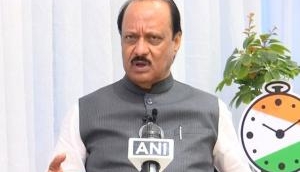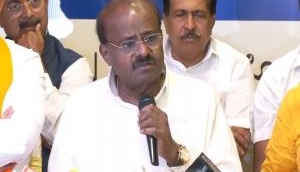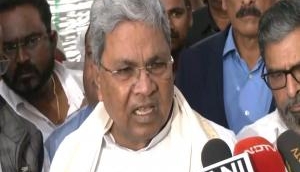
It is a matter of great happiness; India is one of the 12 selected biodiversity countries in the world. But the worrying thing is that biodiversity is gradually becoming the victim of over-exploitation.
Biodiversity is limited, which is a crisis for life. Biodiversity is getting reduced in all the regions. According to H K Jain, Director of Indian Agricultural Research Institute, more than 30,000 paddy varieties were present in our country. But by the end of the century, we will have only 50 left.
Data related to agriculture states that around 20,000 varieties of paddy are present in the world, there may be more. Scientists call it genetic reserves, which mean storing the old varieties and also finding new species.
Why are paddy species suffering? To find out the solution to this question, it was discovered that for the development of agriculture, the government gave a slogan to the Green Revolution. The goal of this scheme was to increase production and develop new seeds.
In every 5-7 years, a new variety is established; the market is incorporated into this process. In 1973 a disease spread in a species called 'Kalyan Sona' wheat in a large part of northern India, which affected a large area.
Scientists claimed that the production of the same type of seed in a single place for a long time would reduce production. In the crop there may be a disease, disease germs get activated. Therefore new species come into existence.
Flowers, which are loved by everyone, are an important part of nature. The tradition of making flower necklaces is centuries old. Today good flower markets are flourishing in every small city.
In his book 'Jivan Sampada Aur Paryavaran' Anupam Mishra mentions that there are 45000 species of flowers in our country and there are 15000 species of flowering varieties available, of these, 7000 species are to be found nowhere else in the world.
Himalaya and Meghalaya mountain ranges have 3000 and 2000 species respectively. The valley of flowers located in Uttarakhand is a rarity. The Northeast has the highest diversity in the region. The lower area of the Western Ghats of Nilgiris is filled with varieties of flowers.
There are 15,000 species of flora that are at a high risk of getting extinct. In this sequence, we have 2500 types of herbs in circulation. With the export of chemical products available from pharmaceutical plants, the country earns an annual income of rupees 55 crores.
These earnings have increased fivefold since the 1970s. Due to the extreme tapping of medicinal plants, these plants are at risk of extinction. The existence of priceless herbs like wormwood from high Himalayan regions is an example of this.
According to Dr. Ashok Kumar Malhotra, Ministry of Information and Broadcasting, Government of India in his book 'Pravasi Pakshi' there are 1200 species out of 86,000 species of birds in our country. India has 2061 bird species, out of which 1750 are here and the rest are migratory birds from the northern regions.
About 180 species are found only in India. Birds are also an important ally for our agricultural country. They eat many pests, protect crops from pests. Some just pick grains but they help grow the trees from here. Some birds naturally curb the populations of 500,000 species of insects and locusts.
Eagles and owls feed on rats and save the crops. Birds in many ways are beneficial for us. One such example is of Shimla in Uttarakhand. Here the farmers of apple used so much insecticide that insects were destroyed in large quantities and in the next season, there was a huge decline in apple production.
In many areas, there was not a single fruit. The over-exploitation of forests, the expansion of intensive agriculture and poaching by the predators has raised the problem of bird life. It would be dishonest to think that this crisis will prevail without affecting human life. That's why a collective effort has to be made to save humankind.
This effort must be grounded, government policies need to be reviewed again. In the United Nations Conference, several objectives have been set up under the goals of sustainable development.
Providing protection to the environment by spreading awareness of the environment and implementing various types of programs and schemes at the government level and reducing the impact of climate change is the main objective of Sustainable Development Goal 13, which also mentions the following targets 13.2 - Integrate climate change measures into national policies, strategies and planning; 13.3 Improve education, awareness-raising and human and institutional capacity on climate change mitigation, adaptation, impact reduction and early warning, therefore it is necessary that we save the earth.
Always try new things because the situation is getting worse. Speaking in detail, it will be known that the disaster has not come only on pests or plants; the agony has also come to be equally on the sea animals.
Over the next 20 years, there will be more plastic than the fish in the sea. That is, the amount of plastic garbage going into the sea is going in the bodies of the sea creatures. So, through these living beings, humans are also eating a small quantity of plastic. Plastic waste is also present as a problem. If we turn to small rivers, then we will find that the fish are getting faster.
Fishes in many areas in our country are not just sources of protein or food. Fishes are also symbols of good fortune. Even today, there is a tradition of painting or drawing fishes in the houses on certain auspicious occasions. For good luck, people also use aquariums in homes. There were also different methods for fishing.
Which mesh will use so that the small fish are not trapped? Special care is taken not to hurt the small fish. Fishes are killed using different methods; by electrification or using explosives due to which many species disappear. As the earth will be redundant, the forest will become like this. Food chains will be healthy and there will be no unnecessary pressure on any one component.
On the whole, only after creating balance in all the vital components of nature, we can create a world where no one day needs to be considered as Environment Day, we must all dream about this world. In order to fulfill this, all of us should be part of it, because when we are all bad then we will have to make it.
The views expressed in the above article are that of Bipin Joshi of Charkha Development Communication Network.
(ANI)







![BJP's Kapil Mishra recreates Shankar Mahadevan’s ‘Breathless’ song to highlight Delhi pollution [WATCH] BJP's Kapil Mishra recreates Shankar Mahadevan’s ‘Breathless’ song to highlight Delhi pollution [WATCH]](https://images.catchnews.com/upload/2022/11/03/kapil-mishra_240884_300x172.png)

![Anupam Kher shares pictures of his toned body on 67th birthday [MUST SEE] Anupam Kher shares pictures of his toned body on 67th birthday [MUST SEE]](https://images.catchnews.com/upload/2022/03/07/Anupam_kher_231145_300x172.jpg)






